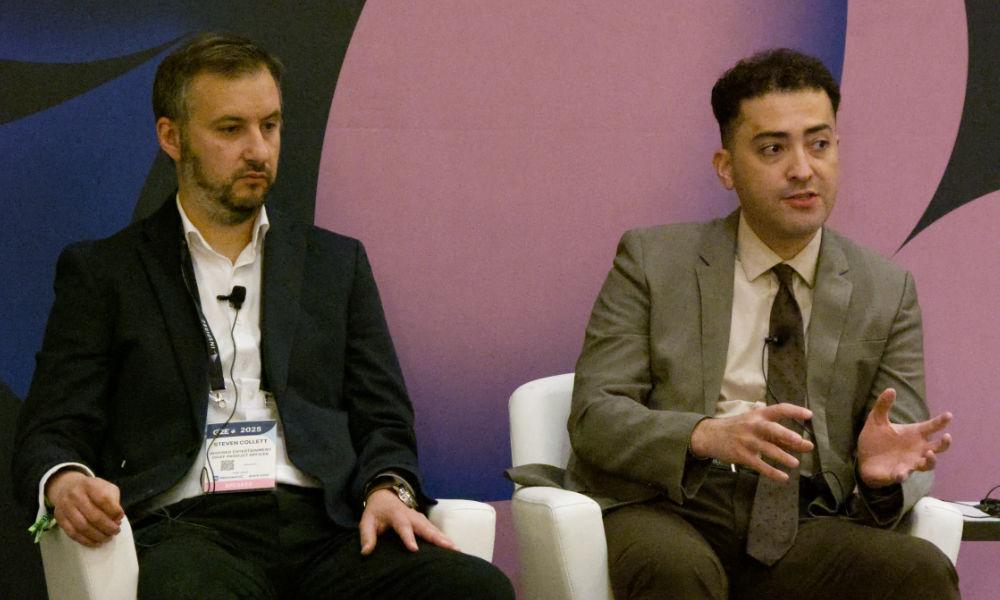During the G2E session, “Strategic Approaches to Omnichannel Game Launches,” Ricardo Cornejo Rivas compared the launch of new games to the music business. Specifically, the vice president of online gaming for Caesars mentioned the frenzy Taylor Swift creates when the pop star puts out new music.
The question is, how can companies offering multichannel content leverage new content and if not create a frenzy, at least generate interest.
“We’re learning from, hoping to create that,” Rivas said. “Hey, the next X, the next series of games, is coming. You should come to our property for this important event.”
The wide-ranging discussion, moderated by Galaxy Gaming Director of Gaming Erika Goldstein, discussed how strategies for omnichannel are evolving.
One of the goals is to replicate the traditional brick-and-mortar casino experience in the online space.
“At the very core of that is a social experience,” Rivas said of the casino experience. “You go there to interact with others.”
Steven Collett, Inspired Chief Product Officer, and Rivas agreed that strategies addressing player satisfaction with games is important. Often, a coordinated cohesive strategy works best.
Collet noted that the release of games online first allows organizations to identify high-performing titles before they transition to retail operations, optimizing investments and the success of games.
Curating games with an omnichannel presence increases both player satisfaction in and performance of a game. Synchronized marketing strategies across platforms can optimize promotional and and enhance player engagement. Omnichannel games also benefit from a seamless connection between digital and physical release. Leveraging success mechanics from one channel to another increases innovations and broadens market reach.
Collett said at one time, there was a marked difference between U.S. and European releases. “And now we’re starting to share the dominant things from one to another.”
The panelists noted that the use of data from both online and land-based channels to personalize promotions, games, and loyalty programs can be advantageous. Unifying incentives across channels and teams can buoy success, as it increases collaborations and makes sure that all stakeholders are motivated to release integrated experiences that benefit operator as well as draw customers.


